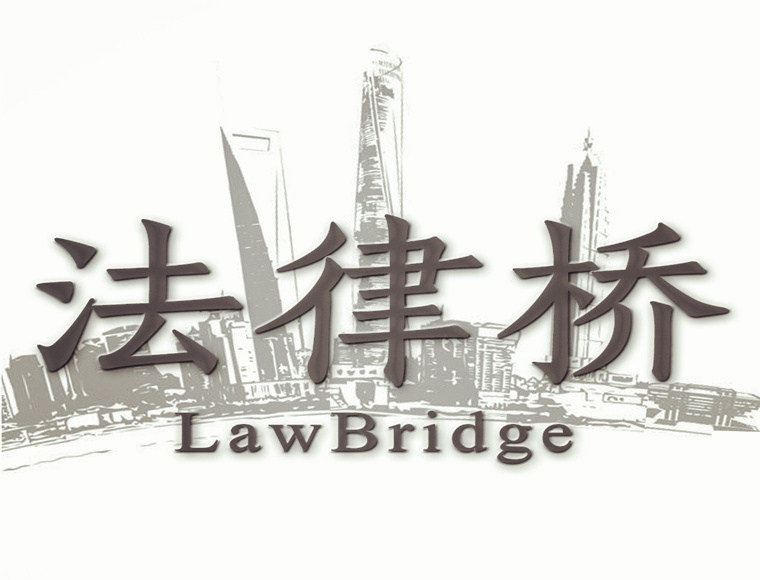"Four Questions and Four Answers" on the Compulsory Liquidation of Private Funds
Foreword
Recently, Yang Chunbao's lawyer team has received a lot of consultation calls from private equity fund investors, asking how the managers should not fulfill their liquidation obligations after the fund expires. What should investors do? In fact, in the article "Analysis of LP Exit Ways of Partnership Private Equity Investment Funds", we have initially introduced "compulsory liquidation" (that is, applying for the court to designate a liquidation team for liquidation) as an investor exit method. This article intends to introduce and analyze some core issues related to the compulsory liquidation of private equity funds based on relevant cases, in order to provide a useful reference for the majority of private equity fund investors.
1. Which organizational forms of private equity funds are eligible for compulsory liquidation?
As we all know, private equity funds are divided into three types: contractual, limited partnership and corporate. Corporate private funds can be liquidated in accordance with the "Company Law" and other laws and regulations, and those who meet the conditions can also apply for compulsory liquidation; for limited partnership private funds, according to the relevant provisions of the Civil Code, the liquidation should refer to the relevant provisions of legal persons However, in judicial practice, some courts have conducted compulsory liquidation of limited partnership private equity funds with reference to the Company Law. Therefore, an application for compulsory liquidation of limited partnership private equity funds is required. There should be no legal obstacles to liquidation; and contractual private funds, because they are private funds based on the "Fund Contract", have no organizational form and are not applicable to the relevant provisions of legal persons, so they are naturally not applicable to compulsory liquidation.
2. Which entities have the right to apply for compulsory liquidation of private equity funds?
According to the relevant provisions of Article 7 of the Judicial Interpretation (II) of the Company Law, the creditors of the company or the shareholders of the company have the right to apply to the court to designate a liquidation team for liquidation. For limited partnership private funds, the fund creditors or partners are the eligible applicants for compulsory liquidation. In judicial practice, most of the applicants for compulsory liquidation of funds are fund investors, and some fund managers also apply, but we have not yet found any cases of fund creditors applying for compulsory liquidation of funds. in particular:
(1) Fund investors apply for compulsory liquidation of the fund
In the case of Tang Min and Shenzhen Dazhengyuan Growth Phase II Equity Investment Fund Partnership for compulsory liquidation of the company [(2019) Yue 0304 Qingshen No. 27], Nantong Jiahe Technology Investment Development Co., Ltd., Nantong Ruyi Internet of Things Industrial Investment Fund Management Application for compulsory liquidation of the center [(2021) Su 0682 Qingshen No. 4], Shanghai Chaoren Electric Co., Ltd. and Shanghai Wushang Equity Investment Fund Center (Limited Partnership) application for compulsory liquidation of the company [(2021) Hu 7101 Qiangqing No. 120 ] and other compulsory liquidation cases, the investors of the underlying fund apply to the court for compulsory liquidation of the fund.
(2) Fund managers apply for compulsory liquidation of funds
In the application for compulsory liquidation of disputes between Tianjin Leishi He'an Equity Investment Management Partnership and Tianjin Leishi Taihe Equity Investment Fund Partnership Partnership [(2021) Jin 02 Qingshen No. 133], Tianjin Leishi Taihe Equity Investment Fund Partnership (i.e. The executive partner of the target fund) (ie the target fund manager) filed an application for compulsory liquidation of the fund with the Tianjin No. 2 Intermediate People's Court. The application for compulsory liquidation was withdrawn on its own due to most of the work in liquidation procedures such as liquidation audit. After we checked the private fund information announcement on the official website of the Asset Management Association of China, the target fund has completed normal liquidation. It can be seen that in some cases, applying to the court for compulsory liquidation may be able to promote the fund to complete its own liquidation to a certain extent.
3. Under what circumstances can I apply for compulsory liquidation of the fund?
According to the relevant provisions of Article 7 of the Judicial Interpretation (II) of the Company Law, the three situations in which the court shall accept the application for compulsory liquidation include: (1) the company is dissolved and the liquidation team is not established within the time limit for liquidation, or (2) although it is established The liquidation group deliberately delays the liquidation, or (3) the illegal liquidation may seriously damage the interests of creditors or shareholders. In judicial practice, cases of compulsory liquidation of funds are not common, and in the few such cases accepted by the court, most of the applicants use the first two situations as the reason for the application. For example, in the case of Shanghai Chaoren Electric Co., Ltd. and Shanghai Wushang Equity Investment Fund Center (Limited Partnership) applying for compulsory liquidation of the company [(2021) Hu 7101 Qiangqing No. 120], the limited partner of the fund involved in the case because the fund appeared The statutory reason for dissolution (i.e. the expiration of the partnership period) but the liquidation group was not established within the time limit to carry out liquidation and the court applied for compulsory liquidation. In the application case for compulsory liquidation of disputes between Tianjin Leishi He'an Equity Investment Management Partnership and Tianjin Leishi Taihe Equity Investment Fund Partnership [(2021) Jin 02 Qingshen No. 133], the executive partner of the fund involved in the case used part of the fund to The limited partner refused to cooperate with him in the industrial and commercial cancellation procedures of the fund, resulting in the failure to complete the self-liquidation (that is, although the liquidation team was established but the liquidation was deliberately delayed), he applied to the court for compulsory liquidation.
Below, we intend to carry out an extended analysis of the first situation of compulsory liquidation in combination with a case. In the case of Tang Min and Shenzhen Dazhengyuan Growth Phase II Equity Investment Fund Partnership applying for compulsory liquidation of the company [(2019) Yue 0304 Qingshen No. 27], Tang Min, the limited partner of the fund involved in the case, has never obtained the case Because of the dividend distribution of the fund involved, the financial and operating conditions of the fund involved in the case could not be known, and the fund involved in the case refused to hold a general meeting of partners, etc., it was believed that the fund involved in the case could no longer achieve the purpose of establishment, and applied to the court for compulsory liquidation of the fund. After review, the court held that the reasons put forward by the applicant that "the fund involved in the case has been unable to achieve the purpose of its establishment" ("no dividends, no meeting, and no auditing of accounts") were not reasons for compulsory dissolution, and the fund involved in the case did not recognize that it had occurred. Therefore, if the reason for dissolution has not yet been determined, the applicant's application for compulsory liquidation of the fund involved in the case lacks basis and will not be accepted. The court also pointed out that compulsory liquidation is mainly a procedural system and does not have the function of resolving disputes over substantive civil rights and obligations. It can be seen from this that the core of the first case of compulsory liquidation, "the company is dissolved without forming a liquidation group to carry out liquidation" lies in the determination of "company dissolution", that is, whether there are any provisions stipulated in the "Company Law" or stipulated in the company's articles of association/partnership agreement. As for the reasons for dissolution, if the court finds that there is no statutory or agreed reason for dissolution, then "this road is dead" (that is, the applicant cannot apply for compulsory liquidation on the grounds that the liquidation group is not established within the time limit after the dissolution of the fund involved). Therefore, it is suggested that the majority of private equity fund investors should specify the reasons for the dissolution of the fund in the fund contract/articles of association/partnership agreement and other documents of the proposed fund as much as possible, so as to have the initiative to withdraw from the fund to a certain extent.
4. What are the consequences of submitting an application for compulsory liquidation of funds?
(1) Withdrawal of the application - the fund will complete the liquidation on its own
For example, in the Tianjin Leishi compulsory liquidation application case introduced above, during the court's review of the compulsory liquidation application, the executive partner of the fund involved in the case withdrew the compulsory liquidation application on the grounds that the fund had completed most of the liquidation matters. The funds involved have completed self-liquidation. It can be seen that, in a sense, filing an application for compulsory liquidation of the fund to the court may be an effective means to urge the relevant parties of the fund to cooperate with the completion of self-liquidation, which is similar to the commonly used in litigation cases. sentence)”.
(2) Unable to liquidate - the compulsory liquidation procedure is terminated, and the applicant claims another right
According to the relevant provisions of the "Minutes of the Work Symposium on Hearing Cases of Compulsory Liquidation of Companies" (hereinafter referred to as "Minutes of Compulsory Liquidation")[1], after the court accepts a case of compulsory liquidation of funds, if the liquidation team designated by the court cannot obtain the funds involved in the case In other words, if the objective basis for liquidation cannot be obtained, the liquidation team cannot find out the financial status, property status and creditor-debtor relationship of the fund involved in the case, so that it cannot comprehensively and objectively If the liquidation of the credits, debts and properties of the fund involved in the case is carried out, the court can determine that it is impossible to liquidate, and can rule to terminate the compulsory liquidation procedure accordingly. At the same time, the court should inform the applicant (that is, the creditor/shareholder/partner of the fund involved in the case) in the ruling to end the compulsory liquidation that the applicant (that is, the creditor/shareholder/partner of the fund involved in the case) can file a complaint with the actual controller of the fund involved in the case (the actual controller of the corporate fund/partnership fund) business partner) to claim the relevant rights.
(3) Completion of full or partial liquidation - termination of the compulsory liquidation procedure, cancellation or continued existence of the involved fund
According to the relevant provisions of the "Compulsory Liquidation Minutes"[2], if the fund involved in the case is dissolved due to the expiration of the duration of the case or the unanimous consent of all shareholders/partners, and the creditor of the fund involved in the case applies for compulsory liquidation, the court will file the debt of the fund involved in the case. After full repayment, if the applicant has not withdrawn the application for compulsory liquidation, the court may continue according to the wishes of the fund involved in the case (complete liquidation: the fund is cancelled after the distribution of the remaining property) or end (the liquidation part is completed: after the external debt repayment, The shareholders/partners of the fund involved in the case unanimously agree that the fund will continue to exist) compulsory liquidation procedures.
(4) Compulsory liquidation is transformed into bankruptcy liquidation
According to the relevant provisions of the "Compulsory Liquidation Minutes"[3], if the liquidation team finds that the funds involved in the case are insolvent during the process of liquidating the property of the fund involved in the case, and cannot reach an agreement with the creditors of the fund involved in the case on a debt repayment plan, the creditors shall have the right to The right to file a bankruptcy petition with the court. If the bankruptcy application is reviewed by the court, the court will terminate the compulsory liquidation procedure in accordance with the law, and the fund involved in the case shall be transferred to the bankruptcy liquidation procedure.
Epilogue
So far, we have not retrieved many cases of forced liquidation of private equity funds from public channels. However, considering that many funds in the market are approaching the expiration of their deadlines (some funds are even forced to "delay again and again" due to delays in realizing project exit), and in recent years due to the negative factors such as epidemic control, many funds The invested projects are facing the situation of substandard performance or loss, which leads to the increasing pressure of the fund to exit. It is believed that in the future, there will be more and more fund investors who are faced with huge investment risks but are unable to exit with the fund manager. If the fund arrangement is agreed, apply to the court for compulsory liquidation of the fund. But when exactly should an application be made? What evidence materials need to be collected for the court to accept a compulsory liquidation application? Issues such as these may not be well understood by ordinary fund investors. It is recommended to consult the professional opinions of private equity fund lawyers in order to achieve better results (to obtain investment principal and/or expected returns, or to reduce them as much as possible. investment losses). (Solemnly declare: Please indicate the author for reprinting: Beijing Dacheng (Shanghai) Law Firm Yang Chunbao and Sun Yan, source: Legal Bridge. Plagiarism and editing are strictly prohibited, and infringement must be prosecuted)
[1] "Minutes of the Symposium on the Trial of the Company's Compulsory Liquidation Cases"
14. Trial of cases that cannot be liquidated
28. If there is no property, account books, or important documents, and the whereabouts of the respondent are unknown, the compulsory liquidation procedure shall be terminated on the grounds that liquidation cannot be carried out.
29. If a creditor applies for compulsory liquidation, and the people's court decides to terminate the compulsory liquidation procedure on the grounds that liquidation cannot be liquidated or cannot be fully liquidated, it shall be stated in the final ruling that the creditor may, in accordance with the provisions of Article 2, Article 18 of the Judicial Interpretation of the Company Law, request the termination of the compulsory liquidation procedure. The respondent's shareholders, directors, actual controllers and other liquidation obligors shall be responsible for the repayment of their debts. Where a shareholder applies for compulsory liquidation, and the people's court terminates the compulsory liquidation procedure on the grounds that liquidation cannot be carried out or cannot be fully liquidated, it shall be stated in the final ruling that the shareholder can claim relevant rights against the controlling shareholder and other subjects who actually control the company.
[2] "Minutes of the Symposium on the Trial of the Company's Compulsory Liquidation Cases"
17. Regarding the termination of the compulsory liquidation procedure
36. After the liquidation of the company is completed in accordance with the law, after the liquidation team makes a liquidation report and submits it to the people's court for confirmation, the people's court shall rule to terminate the liquidation procedure. After the company registration authority cancels the company registration according to the application of the liquidation group, the company shall be terminated.
37. If the company is to be dissolved voluntarily due to the expiration of the business period stipulated in the company's articles of association or other reasons for dissolution stipulated in the company's articles of association, or the shareholders' meeting or the general meeting of shareholders resolves to dissolve voluntarily, after the people's court accepts the application for compulsory liquidation submitted by the creditor, it will distribute the remaining property to the shareholders. , the company revises the articles of association, or the shareholders meeting or the shareholders meeting resolves that the company continues to exist, and the applicant fails to withdraw his application after his personal claims and other claims have been fully paid off, the people's court may, at the request of the respondent, rule to terminate the compulsory liquidation The company can continue to exist after the compulsory liquidation procedure is concluded.
[3] "Minutes of the Symposium on the Trial of the Company's Compulsory Liquidation Cases"
16. The connection between compulsory liquidation and bankruptcy liquidation
32. During the compulsory liquidation of the company, if the liquidation team finds that the company’s property is insufficient to pay off the debts when cleaning up the company’s property and compiling the balance sheet and property list, it shall, in addition to complying with the provisions of Article 2, Article 27 of the Judicial Interpretation of the Company Law, negotiate with the creditors to make a In addition to the debt repayment plan and debt repayment, an application shall be made to the people's court for declaration of bankruptcy in accordance with the provisions of Article 188 of the Company Law and Article 7, Paragraph 3 of the Enterprise Bankruptcy Law.
33. During the compulsory liquidation of the company, if the relevant obligee files a separate bankruptcy application to the people's court in accordance with the provisions of Articles 2 and 7 of the Enterprise Bankruptcy Law, the people's court shall conduct a review in accordance with the law. If the bankruptcy application of the right holder complies with the provisions of the Enterprise Bankruptcy Law, the people's court shall rule to accept it according to law. After the people's court has ruled to accept the bankruptcy application, it shall rule to terminate the compulsory liquidation procedure.





















































First, please LoginComment After ~